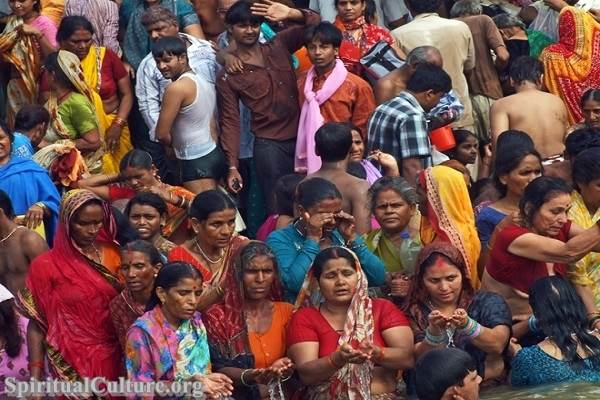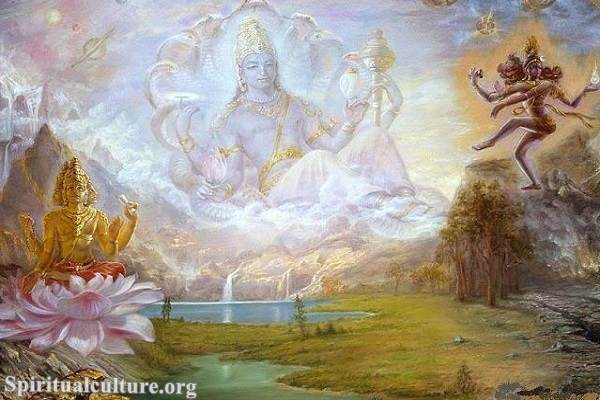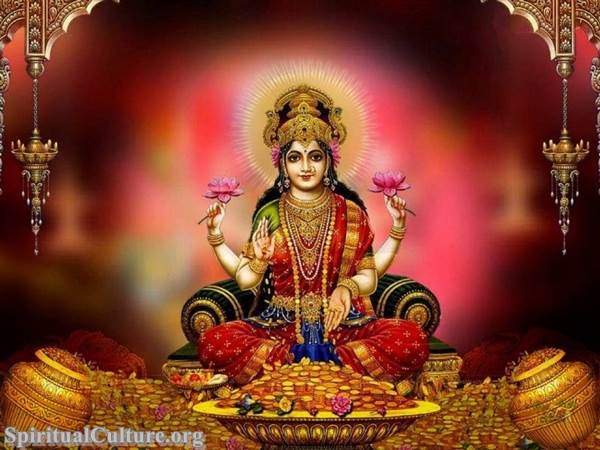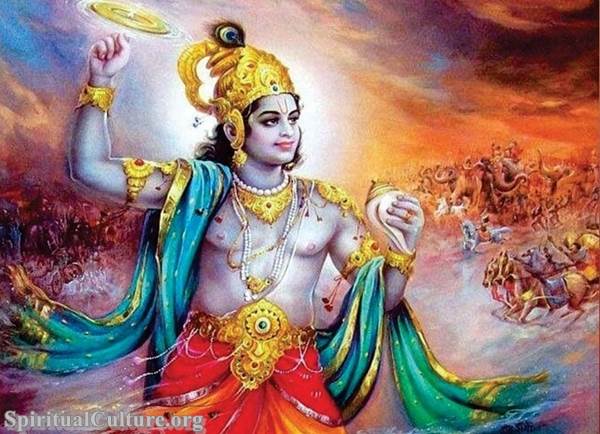The vast sky above has long stirred humanity’s deepest questions. Why do we suffer? What guides our fate? How do invisible forces shape our lives? In Hinduism, such questions find symbolic and spiritual expression through the Navagrahas — the nine planetary deities who represent cosmic energies that influence all beings.
These aren’t mere astronomical bodies. In Hindu tradition, each graha (planet) is a sentient force, a divine intelligence that responds to karma, time, and dharma. This article, offered from the heart of Spiritual Culture, will explore the meaning, significance, and spiritual role of the Navagrahas. Together, we’ll walk through ancient insights and modern relevance, understanding how these nine energies help guide the soul’s journey through life.
The Navagrahas: Who Are They?
The word Navagraha comes from Sanskrit: nava (nine) and graha (seizer or influencer). These nine are not all planets in the modern astronomical sense, but rather celestial entities believed to hold sway over human experiences, health, emotions, and destiny.
The traditional Navagrahas include:
- Surya (Sun)
- Chandra (Moon)
- Mangala (Mars)
- Budha (Mercury)
- Bṛhaspati (Jupiter)
- Shukra (Venus)
- Shani (Saturn)
- Rahu (North Lunar Node)
- Ketu (South Lunar Node)
Each of these deities has its own mythology, characteristics, mantras, and symbolic influence. Together, they form a powerful framework of cosmic rhythm, reminding us that human life is interwoven with the greater dance of the universe.
Surya: The Sun God — Vitality and Soul
Illumination, Ego, and Authority
Surya is considered the king of the Navagrahas. He governs the soul (ātman), vitality (ojas), and consciousness. As the giver of light and energy, Surya represents self-realization and leadership. His influence is essential for clarity, strength, and dharma.
“As the sun, I am the light of all planets.” — Bhagavad Gita 10:21
Worship of Surya brings confidence, health, and inner power. He is traditionally offered prayers at sunrise, especially during the Sandhya Vandanam rituals or by performing Surya Namaskar (sun salutations).
Chandra: The Moon God — Emotions and Mind
Reflection, Fertility, and Intuition
Chandra rules over the mind (manas), emotions, and memory. He is associated with nurturing, motherly love, and fluidity. A strong Moon in one’s horoscope reflects emotional intelligence and serenity, while a weakened Chandra may bring mental unrest or mood disorders.
“The Moon is the mind among the senses.” — Bhagavad Gita 10:22
Devotees offer rice, milk, and white flowers to Chandra, particularly on Mondays (Somvar), to balance emotional turbulence and enhance peace.
Mangala: Mars — Courage and Action
Drive, Discipline, and Conflict
Mangala is the god of energy, willpower, and assertion. Often depicted red and fierce, he governs blood, muscles, and warlike tendencies. Mars gives us courage but also has the potential for aggression if imbalanced.
He is honored on Tuesdays (Mangalvar) to strengthen resolve, overcome delays, and harness righteous anger. A balanced Mangala empowers us to act decisively, uphold justice, and face life’s battles with valor.
Budha: Mercury — Intellect and Communication
Learning, Speech, and Trade
Budha signifies wisdom, wit, and adaptability. He governs commerce, language, and reason. A beneficent Mercury leads to eloquence, logic, and strong analytical skills; an afflicted one may cause confusion or miscommunication.
“Among the wise, I am the wisdom.” — Bhagavad Gita 10:38
Offerings to Budha on Wednesdays (Budhvar) support clarity of thought, success in studies, and harmonious expression.
Bṛhaspati: Jupiter — Wisdom and Expansion
Religion, Ethics, and Guru Energy
Bṛhaspati is the teacher of the gods (Deva-Guru), embodying dharma, spiritual growth, and benevolence. His energy expands whatever it touches — be it knowledge, wealth, or faith.
He is especially revered by seekers and students, with Thursdays (Guruvar) dedicated to honoring him. A strong Jupiter leads to abundance and wisdom; a weak one may signal arrogance or misuse of spiritual power.
“Among priests, know me to be the chief.” — Bhagavad Gita 10:24
Worship includes offerings of turmeric, yellow flowers, and chanting of the Guru Beej Mantra.
Shukra: Venus — Love and Beauty
Sensuality, Relationships, and Artistic Sensibility
Shukra, the Asura-Guru (teacher of demons), governs material pleasures, creativity, and love. He is the poet, the lover, the artist — refined, romantic, and full of allure. Yet he also offers deep spiritual insight when aligned with devotion and restraint.
Friday (Shukravar) is sacred to him. Offerings of white flowers, perfumes, and sweets help restore balance in love, pleasure, and aesthetics.
Shani: Saturn — Karma and Endurance
Discipline, Delay, and Detachment
Perhaps the most misunderstood, Shani is the judge of karma — strict, impartial, and slow. He teaches through hardship, but not as punishment — rather, as a path toward purification and resilience. His lessons are profound: patience, integrity, and detachment.
“Among punishers, I am time.” — Bhagavad Gita 10:30
Shani is honored on Saturdays with prayers for protection from suffering and the strength to endure trials. Worship often includes lighting sesame oil lamps and offering black sesame seeds.
Rahu: The North Node — Obsession and Transformation
Desire, Confusion, and Worldly Ambition
Rahu is not a physical planet but a shadow — a chāyā graha. He signifies illusion, intoxication, and the appetite for power and fame. When unbalanced, Rahu can create chaos and compulsion; when aligned, he leads to breakthroughs and unconventional success.
Associated with solar eclipses, Rahu is worshipped to neutralize negative influences and harness transformative energy. He teaches us to discern illusion from truth.
Ketu: The South Node — Liberation and Disconnection
Spiritual Insight, Renunciation, and Moksha
If Rahu is the head of the serpent, Ketu is the tail. Where Rahu grasps, Ketu releases. He rules detachment, past lives, and the dissolution of ego. Ketu is often feared because he severs attachments — but in doing so, he opens the door to enlightenment.
Worship of Ketu aids in spiritual clarity, intuitive growth, and release from material bondage. His energy can lead to profound inner freedom.
The Cosmic Dance of Karma
In Hindu astrology (Jyotiṣa), the Navagrahas are not deterministic forces, but reflections of karmic patterns. They don’t cause suffering or success — they reveal the timing and themes of our soul’s journey through various lifetimes.
Their influence shifts according to our past actions and present consciousness. A person under Saturn’s influence may experience delays — not as punishment, but as an invitation to build inner strength. A person influenced by Jupiter may find expansion — but without humility, it may lead to ego inflation.
Each planet becomes a mirror. Each transit, an opportunity for growth.
Temples and Devotion to the Navagrahas
Navagraha temples are found throughout India, often as shrines within larger temple complexes or as standalone structures — especially in Tamil Nadu and Andhra Pradesh. Devotees perform navagraha shanti rituals to mitigate planetary afflictions and receive blessings.
In Tamil Nadu, the Navagraha Temples near Kumbakonam form a famous pilgrimage route where each of the nine deities has a distinct shrine. These sacred sites remind us that while the planets may influence, the grace of the divine transcends all limitations.
The Deeper Meaning: Planets as Inner Archetypes
Beyond external worship, Hinduism invites us to contemplate the Navagrahas as inner energies. Surya is the light of consciousness. Chandra is the mind. Shani is the karma we must face. Rahu and Ketu are our fears and renunciations.
The real journey is inward — recognizing how each graha reveals a part of our inner universe. The planets rotate not only in the sky, but in our hearts.
Reflect and Reimagine
The Navagrahas are more than cosmic influencers — they are teachers. They show us that life is not random but rhythmical, not fated but patterned by karma and grace. Each planetary deity brings both challenge and blessing, depending on how we relate to their lessons.
As we look up at the stars, may we also look within. May we offer our struggles, our gifts, and our lives to a deeper order. And may we remember that in the dance of the Navagrahas, the soul is never alone — it is always moving toward the light.
This is the wisdom of Spiritual Culture: ancient yet ever-new, personal yet universal — guiding each soul through the stars toward its divine purpose.




